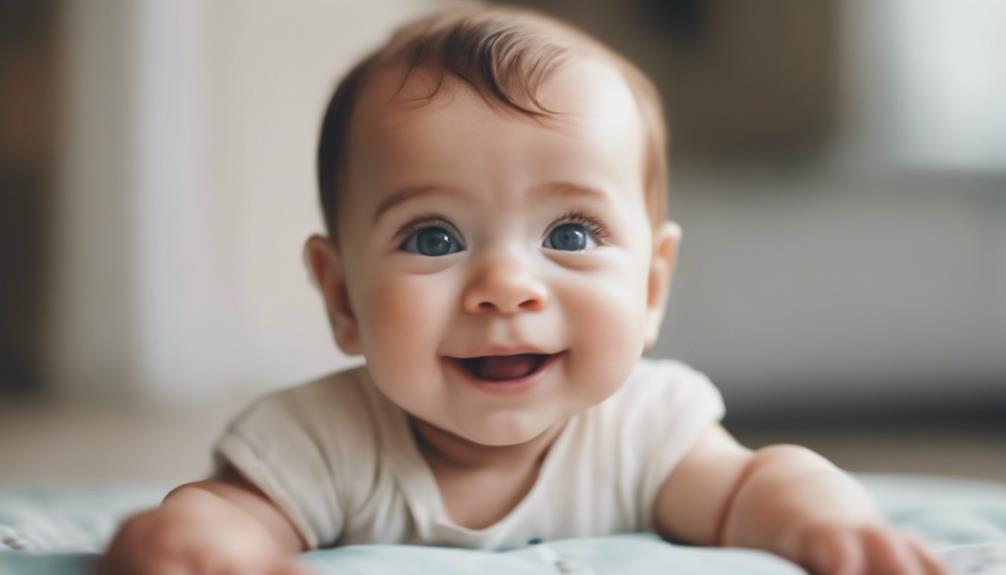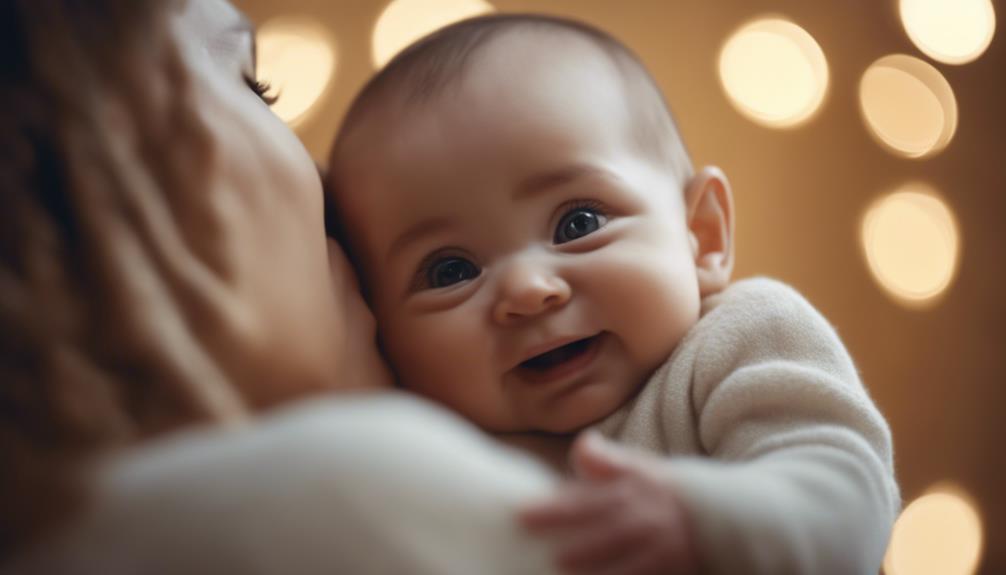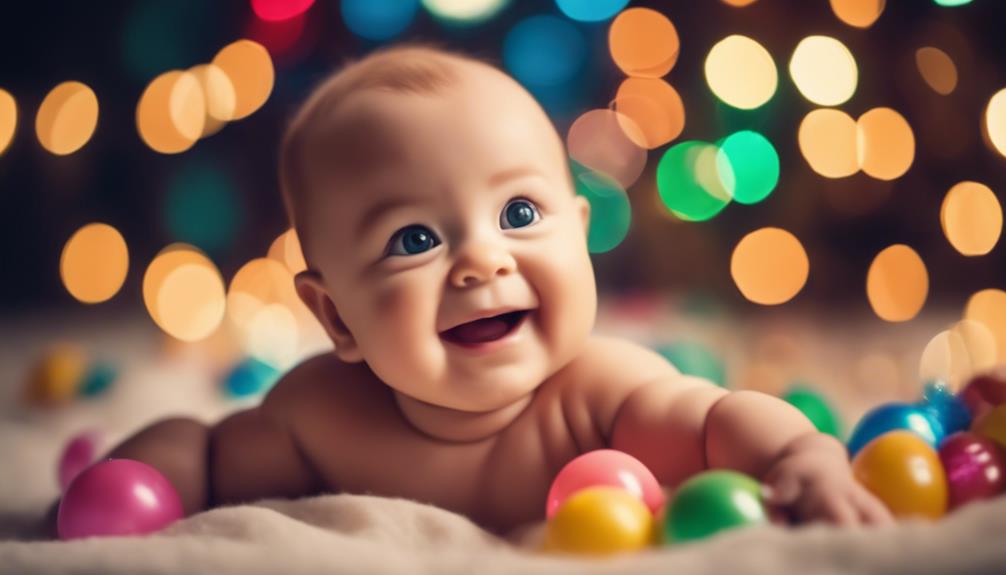To determine if a baby enjoys your company, pay attention to their body language for subtle signs of affection. They might make eye contact, turn towards you, or smile. Babies often “light up” when you are around, showing their fondness. Look out for cooing, babbling, or laughing as these are signs of communication and bonding. Babies show calmness and comfort by snuggling in your arms, seeking physical closeness, and maintaining eye contact. Their relaxed body language and peaceful expressions demonstrate trust and affection. Observe their reactions closely as they are genuine indicators of their liking towards you. Recognizing these cues can help you establish a strong bond with the baby.
Key Takeaways
- Maintaining eye contact and smiling at you.
- Cooing, laughing, and babbling in your presence.
- Seeking physical closeness and comfort.
- Showing contentment and relaxation in your arms.
- Displaying genuine joy and enjoyment around you.
Eye Contact
To gauge a baby's feelings towards you, observe their eye contact as it can reveal a lot about their emotional connection. Babies often use eye contact as a way to show their affection and recognition towards you. When a baby makes direct eye contact and maintains it for a few seconds, it signifies their interest in interacting with you.
This act of looking into your eyes is a clear indication of the bond they feel towards you. Additionally, babies may smile while making eye contact, which further reinforces their happiness and liking towards you. Strong eye contact with a baby can strengthen the bond between caregiver and child, fostering a positive and nurturing relationship.
Turning Towards You
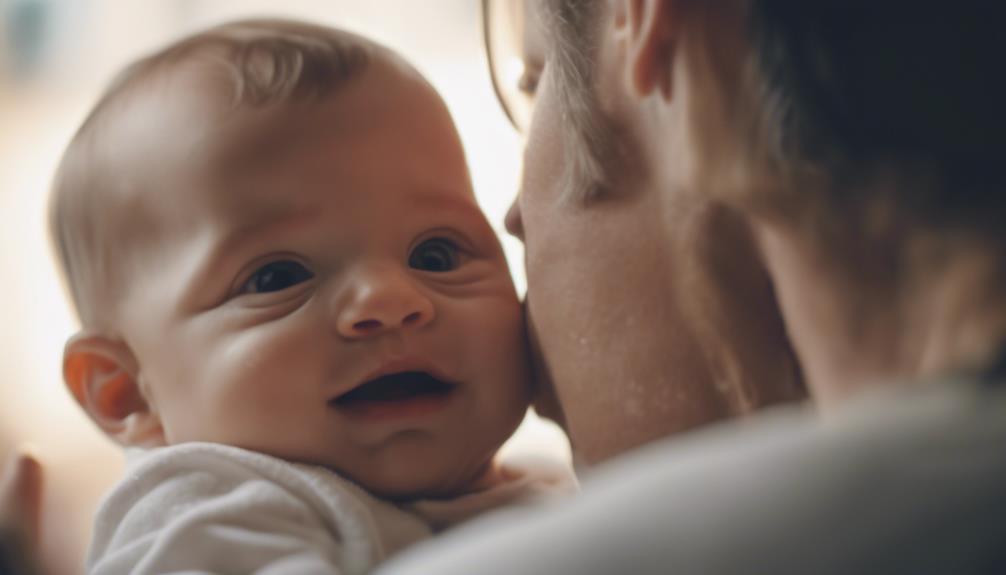
When a baby turns towards you, it signifies a recognition of your presence and a positive emotional connection. This subtle action reveals that the baby is seeking comfort, security, and familiarity in your company.
By turning towards you, the baby is showing trust and a desire to bond with you. This gesture indicates a strong attachment and feelings of affection towards you.
Turning towards you shows that the baby is seeking comfort, security, and familiarity in your presence.
Babies often turn towards caregivers they like, trust, and feel safe with.
This subtle sign of turning towards you can be a strong indicator of the bond and attachment the baby feels towards you.
Observing the baby's body language, especially their head movements, can reveal their feelings of affection and connection towards you.
Opening Their Mouth
When a baby opens their mouth around you, it could be a positive sign. It may indicate that they feel comfortable and at ease in your presence.
This subtle gesture could be their way of showing they enjoy being around you.
Facial Expressions
Babies may express comfort and contentment towards you by opening their mouths in a relaxed manner. This facial expression can signal that the baby loves and trusts you, showing signs that your baby feels safe and secure in your presence.
When a baby opens their mouth slightly, it indicates a sense of relaxation and a willingness to engage with you. Recognize and respond to these cues of comfort as they help build a strong bond with your little one.
An open mouth can be one of the subtle ways a baby smiles and learns to convey affection towards caregivers like you. By paying attention to how a baby's mouth opens in different situations, you can better understand their physical needs and emotional state.
Eye Contact
One way to gauge a baby's affection and comfort level towards you is by observing how they make eye contact while opening their mouth. When a baby makes eye contact with you and opens their mouth, it signifies recognition, comfort, and a positive emotional connection.
This subtle sign indicates that the baby likes you and enjoys your presence, feeling secure in your company. According to child development experts, this combination of eye contact and opening mouth is a way for babies to communicate their feelings towards you. It's a non-verbal way of showing that they're forming a bond with you.
Melting in Your Arms
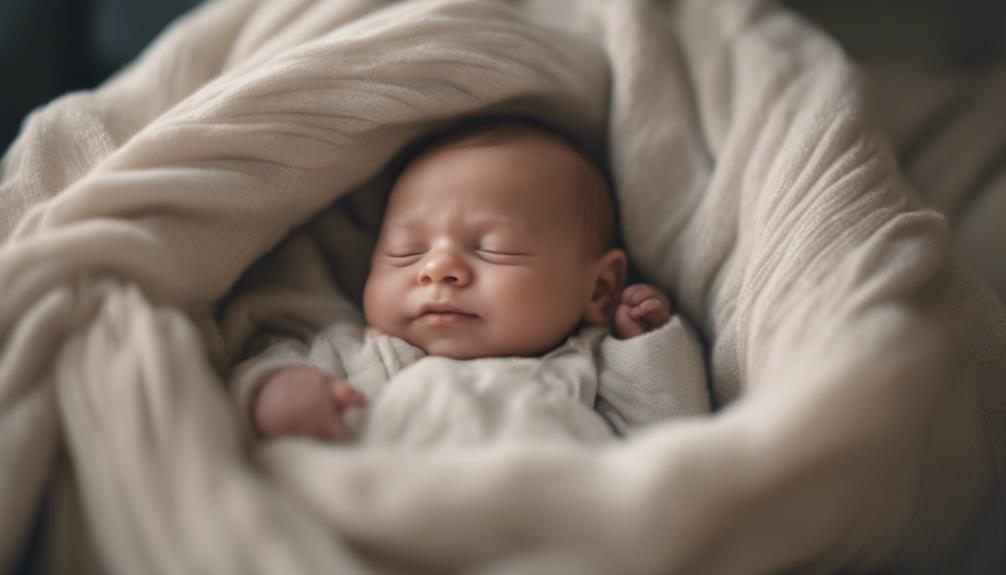
Experiencing a baby melt in your arms is a heartwarming indication of their comfort and affection towards you. When a baby relaxes in your arms, it signifies a sense of security and trust in your presence.
Feeling the baby go limp or melt in your arms is a heartwarming display of their emotional connection with you. Babies often show contentment and relaxation when held by someone they like, displaying their fondness for you through relaxed muscles and snuggling closer. This behavior showcases the baby's comfort and affection towards you.
- Comfort and Affection: A baby relaxing in your arms shows their affection and comfort.
- Sense of Security: The baby melting in your arms indicates a feeling of security and trust.
- Contentment and Relaxation: Babies display contentment and relaxation when held by someone they like.
- Fondness for You: Their body language, like relaxed muscles, indicates their fondness for you.
- Emotional Connection: The sensation of a baby relaxing in your arms is a heartwarming display of their emotional connection with you.
Smiling
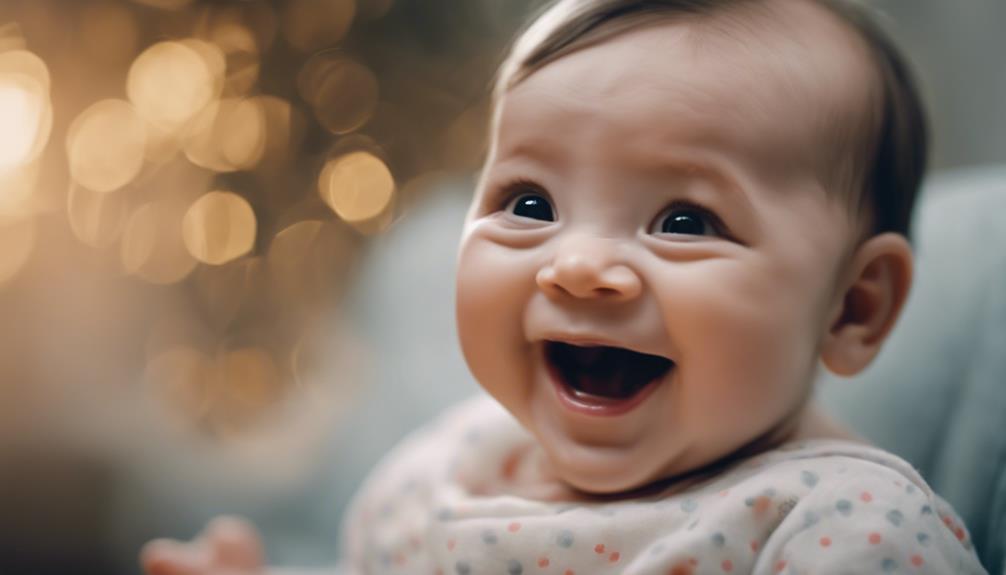
When a baby smiles at you, it's an essential expression of affection and connection. Social smiles, which typically start appearing around 6-8 weeks old, signify an emotional response and a forming caregiver bond. Unlike reflex smiles seen in newborns, these smiles are intentional and reflect the baby's feelings towards you. Paying attention to a baby's smiles can help gauge their affection and connection with you.
| Baby Smiles | Emotional Response | Significance |
|---|---|---|
| Social smiles | Affection | Indicates bonding |
| Reflex smiles | None | Involuntary action |
| Genuine smile | Connection | Reflects feelings |
Understanding the meaning behind a baby's smile is vital in nurturing your relationship with them. These smiles go beyond a simple facial expression; they are a way for babies to communicate their emotions and feelings towards you. By recognizing and reciprocating these smiles, you strengthen the connection and bond with the baby.
Cooing and Babbling
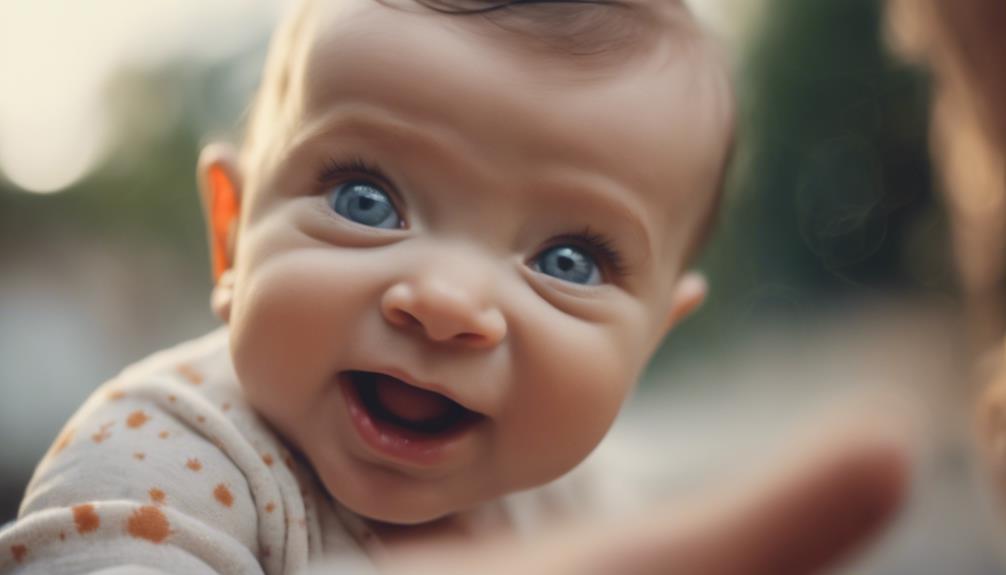
Babies express early signs of communication and affection through cooing and babbling. These vocalizations play a vital role in forming a bond between caregivers and babies, facilitating interaction and emotional connection. Responding to a baby's cooing and babbling can strengthen this bond and create a sense of security for the baby.
- Babies coo and babble to interact with their caregivers and show interest.
- The frequency and pitch of a baby's cooing and babbling can convey emotions and attachment.
Encouraging a baby's vocalizations can help in language development. Cooing and babbling are essential for fostering a sense of connection between caregiver and baby. These early communication signs are indicative of the baby's emotional engagement and attachment towards you.
Understanding and responding to a baby's cooing and babbling not only aids in language development but also nurtures a strong emotional bond between the caregiver and the baby.
'Lighting Up' in Your Presence
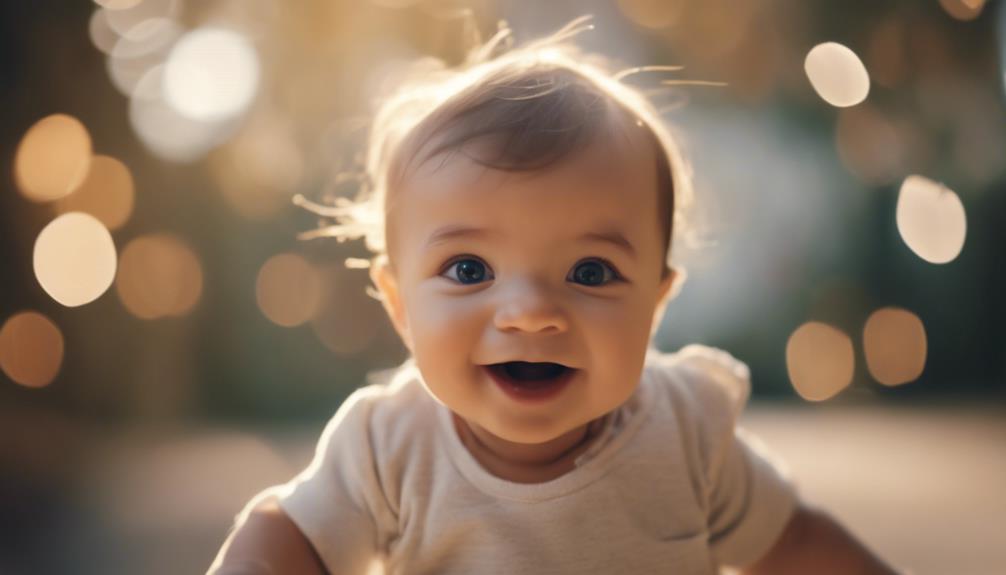
Upon seeing you, infants often 'light up' by flashing smiles, making eye contact, and displaying excitement, signaling their fondness for your presence. These baby smiles, along with their joyful facial expressions, indicate their love and trust towards you.
When babies interact and engage with you, it's an important moment for bonding as the caregiver starts to recognize their importance in the baby's life. The way babies show their affection through body language, such as reaching out or leaning in towards you, is a positive response that speaks volumes about their feelings.
Observing a baby's alertness, focus, and overall happiness in your company is a clear indicator of the positive impact you have on them. Remember, these subtle cues in their behavior are their way of expressing their liking for you and building a connection based on mutual joy and comfort.
Laughing
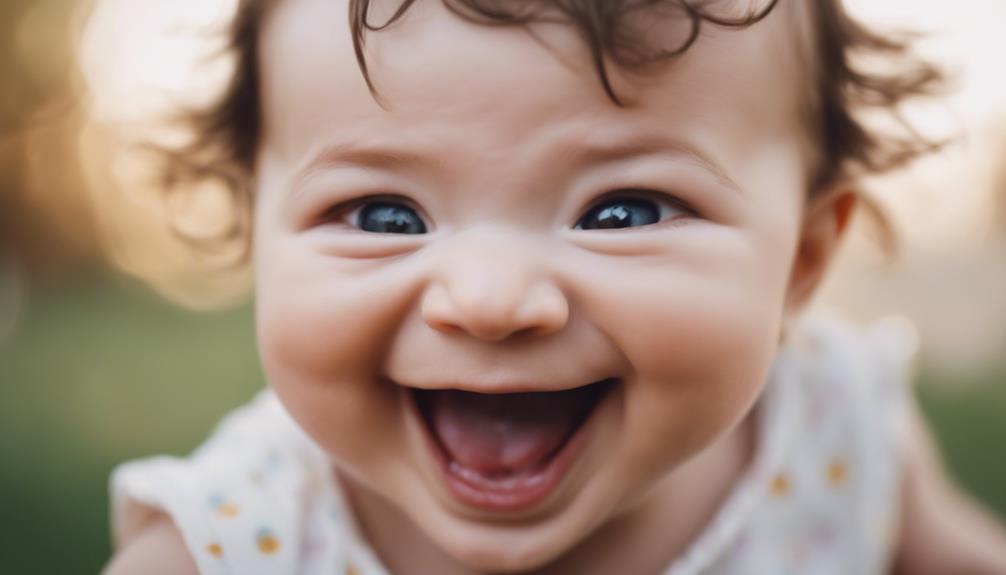
Seeing a baby's joyful laughter in response to your interactions can be a heartwarming indication of their enjoyment and connection with you. When a baby laughs, it signifies a moment of shared joy and a strong bond forming between you both. Here are some key points to ponder about a baby's laughter:
- Laughter as a Connection: Babies may laugh in response to your actions or expressions, showing they enjoy your interaction.
- Joy and Enjoyment: Laughter is a sign of joy, indicating the baby finds you entertaining and engaging.
- Infectious Laughter: A baby's laughter can be infectious, creating a positive and happy bond.
- Timing and Context: Pay attention to the timing and context of the baby's laughter to understand what brings them joy.
- Encouraging Bonding: Encouraging and eliciting laughter from a baby can deepen your bond and create lasting memories of shared happiness.
Understanding the significance of a baby's laughter can help nurture a strong and joyful connection between you and the baby.
Displaying Calmness and Comfort
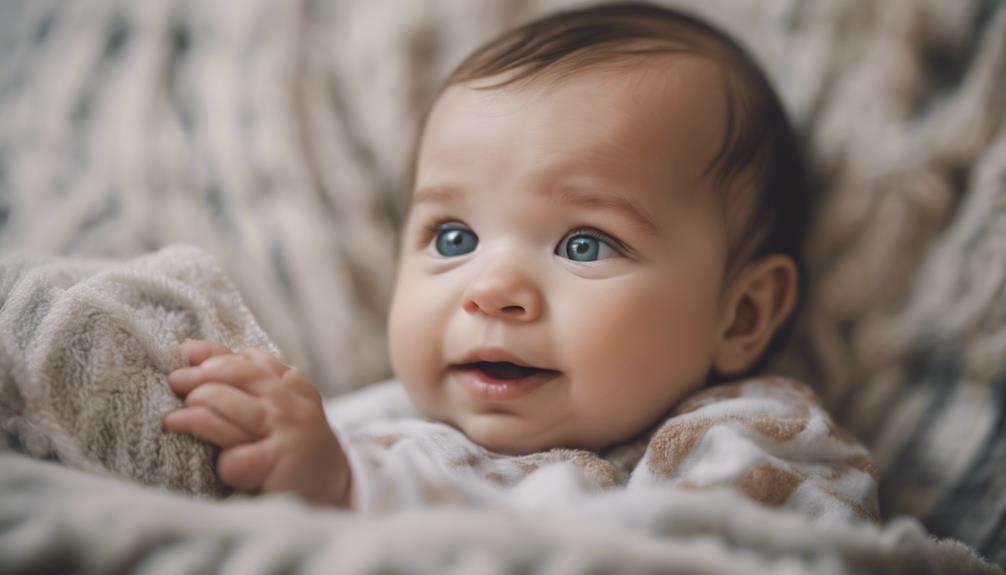
Exuding a sense of tranquility and ease can serve as a key indicator that a baby feels comfortable and at peace in your presence. When a baby displays calmness and comfort, it often translates into relaxed body language and peaceful expressions.
Pay attention to subtle cues like seeking physical closeness, such as snuggling into your arms or chest, as a sign of trust and connection. If a baby smiles, coos, or giggles around you, it's a positive sign of affection and liking.
Additionally, observe the baby's eye contact and attempts to maintain visual contact with you, indicating a genuine connection. Babies may also show a preference for being soothed or comforted by you, which further demonstrates their trust and liking in your presence.
Frequently Asked Questions
How Can You Tell if Your Baby Likes You?
You can tell if your baby likes you by observing their reactions. When they make eye contact, smile, reach out, show excitement, seek comfort, and respond positively to you, these are all subtle signs of their affection.
How Do I Know if My Baby Is Attached to Me?
You can know if your baby is attached to you by observing their reactions. They may turn towards you, seek physical contact, and show joy when near. Crying upon separation, excitement upon reunion, and seeking reassurance are strong indicators of attachment.
How Do You Know if Your Baby Is Looking at You?
You know your baby is looking at you when they turn their head towards you, engage in eye contact, prefer your voice, smile in your presence, and seek comfort from you. These are signs of affection and liking.
Can Babies Sense When You Don't Like Them?
Babies can sense when you don't like them through subtle cues like avoiding eye contact, increased crying, or signs of distress. Your negative emotions can impact their behavior, leading to fussiness or clinginess. Bonding and affection are essential for a positive relationship.
Conclusion
To sum up, there are subtle signs that can indicate whether a baby likes you. By observing their eye contact, body language, and reactions, you can gain insight into their feelings towards you. Remember to pay attention to their cues and respond with warmth and care.
As the saying goes, 'actions speak louder than words,' so take note of these signs to deepen your bond with the little one in your life.

